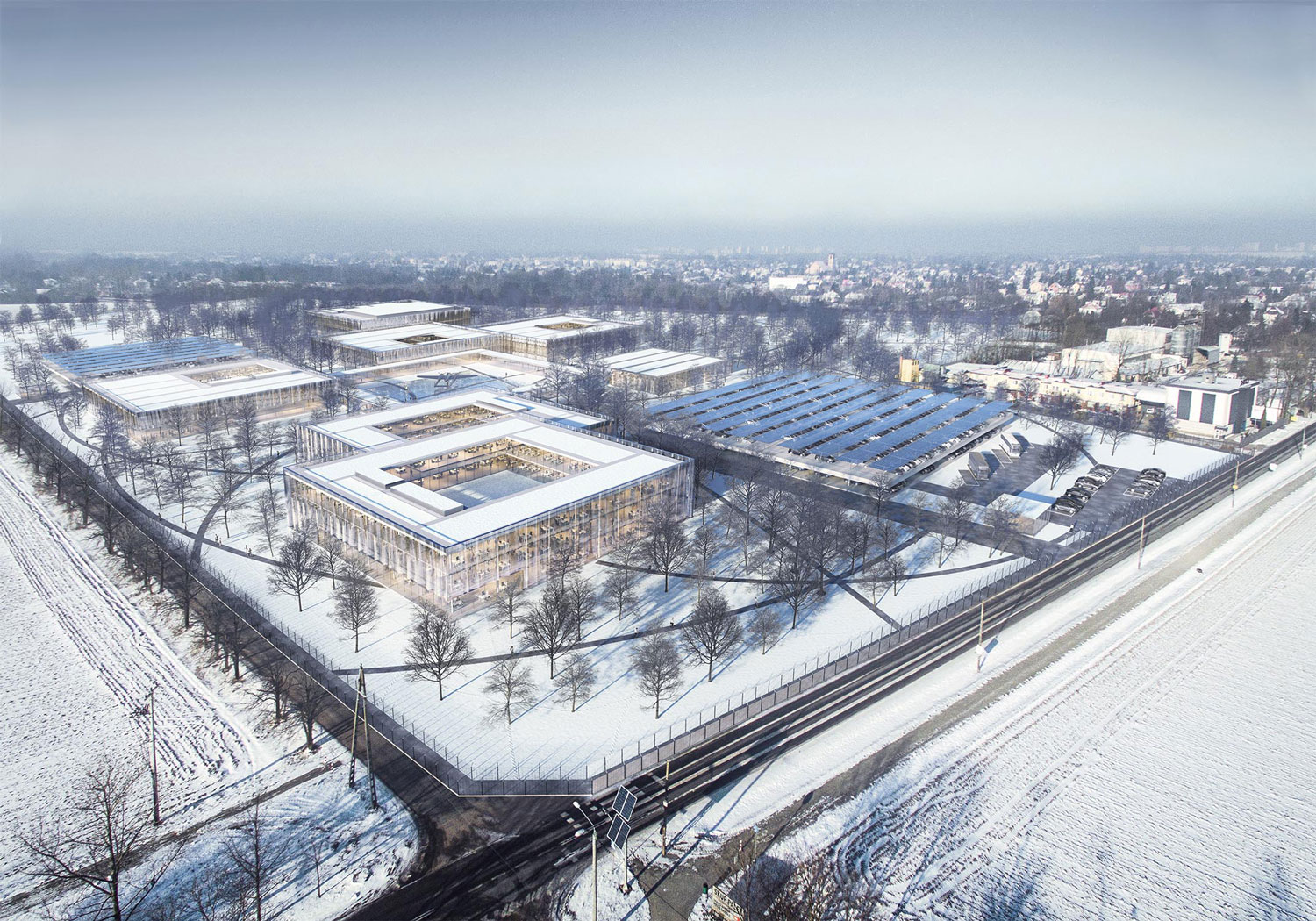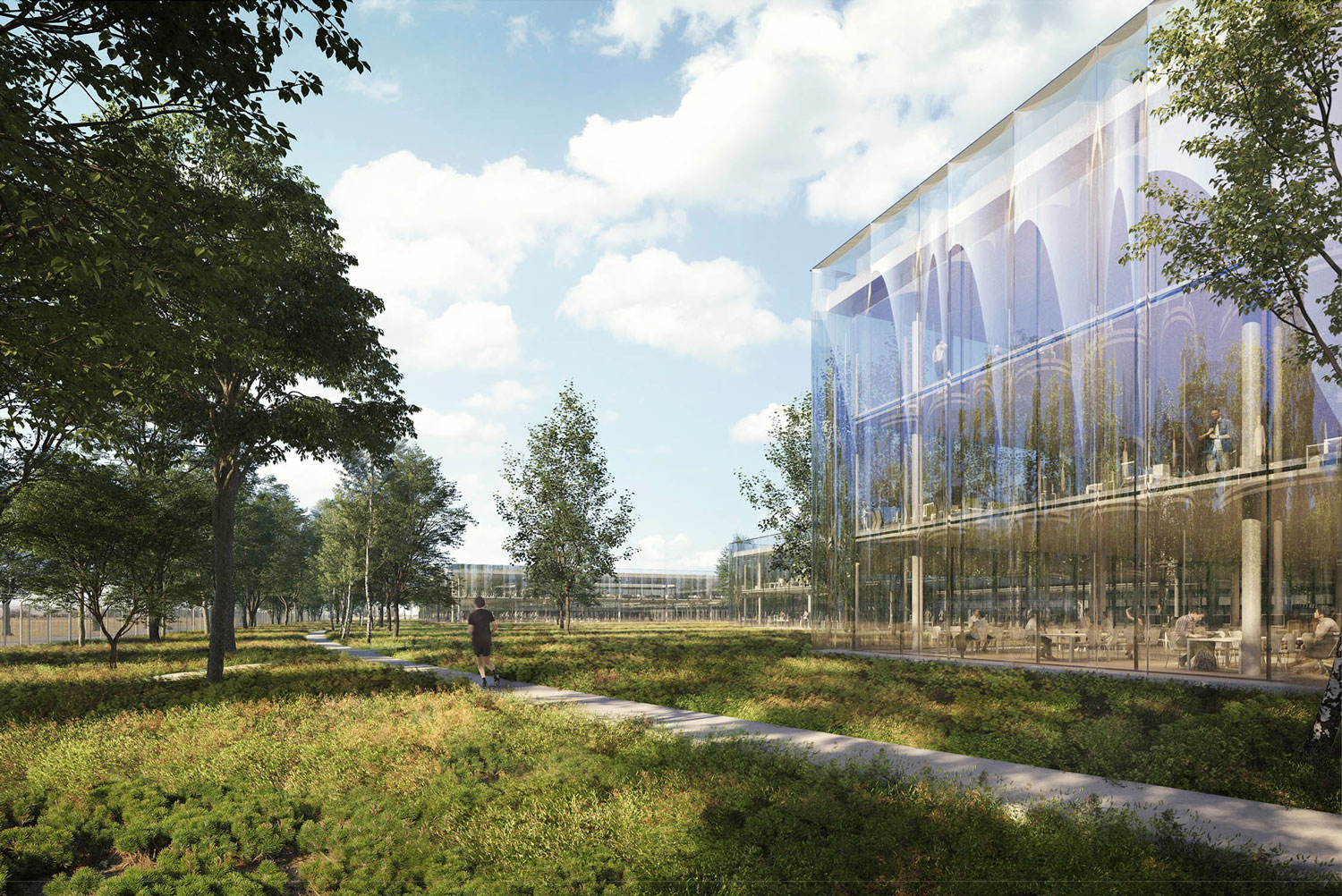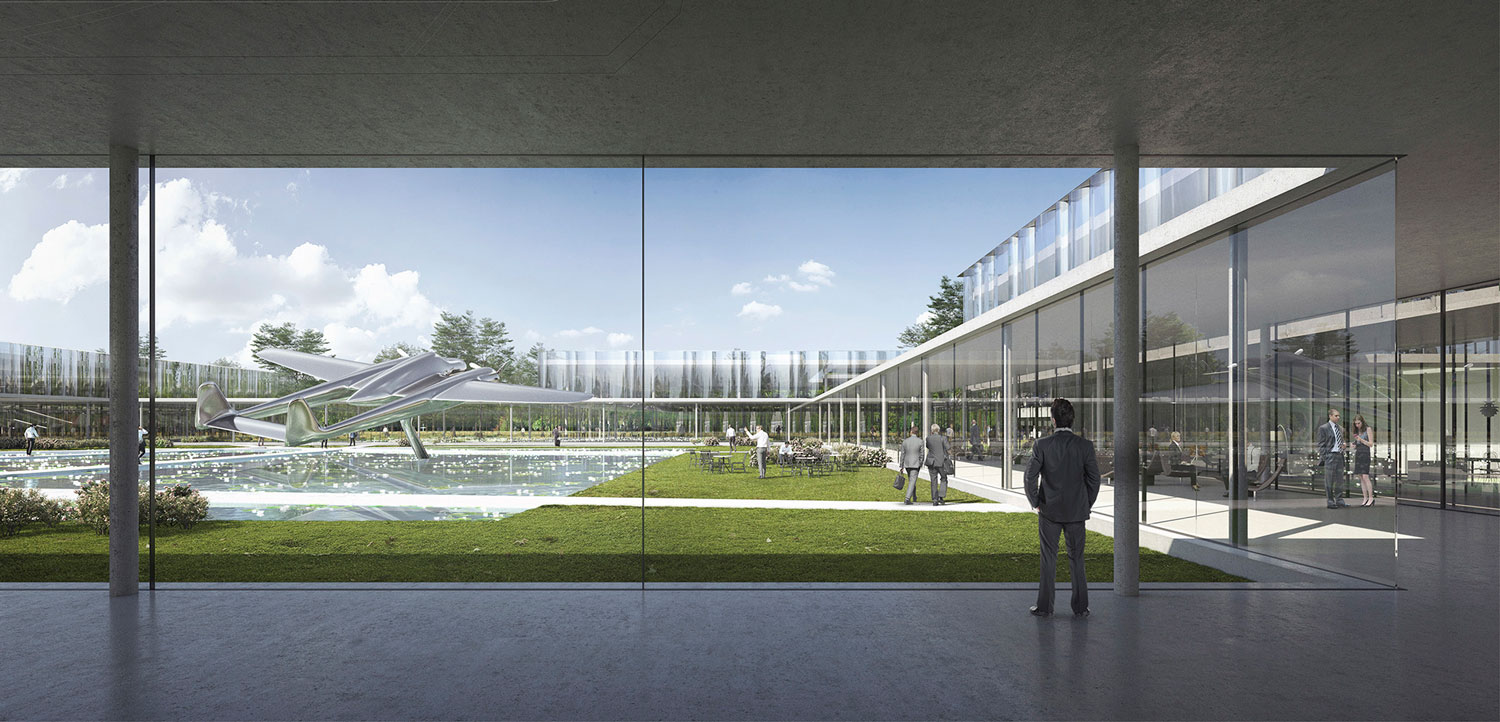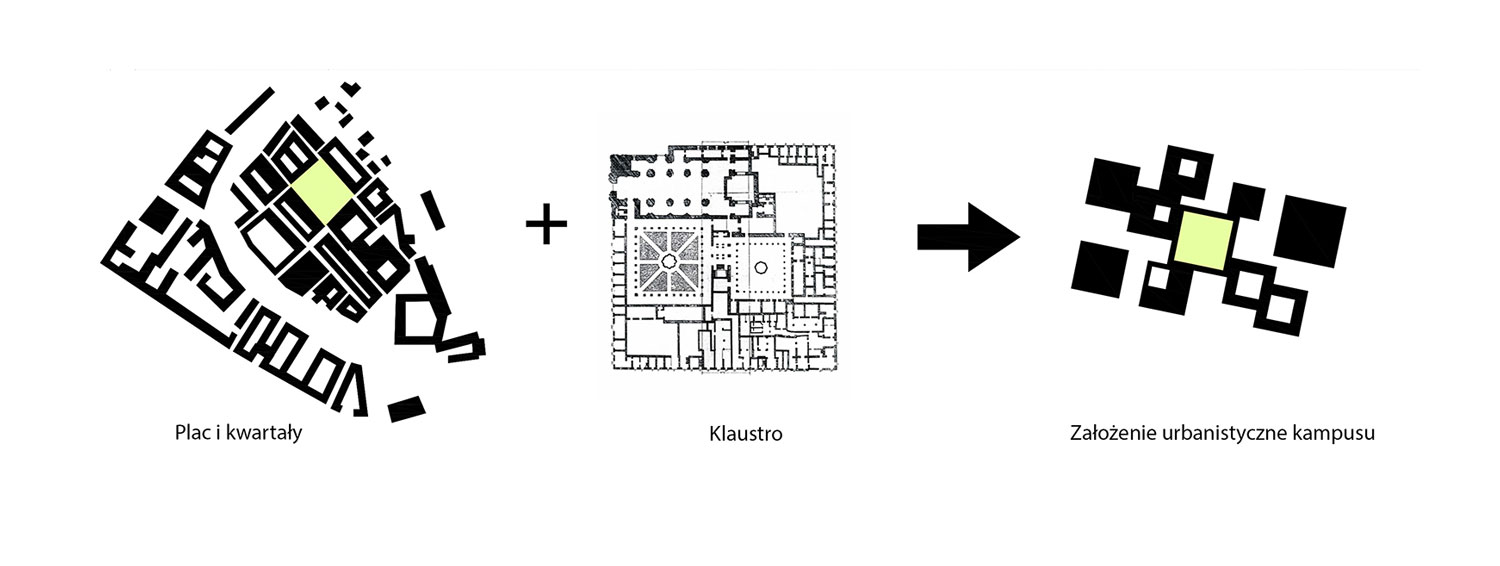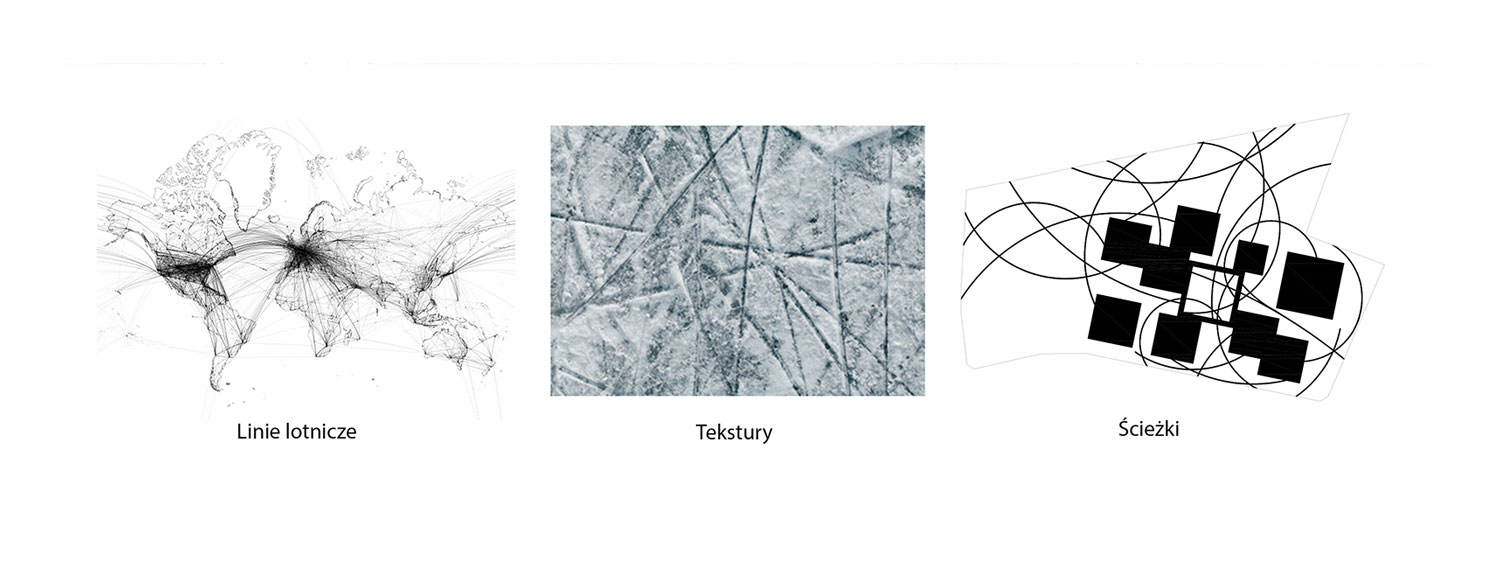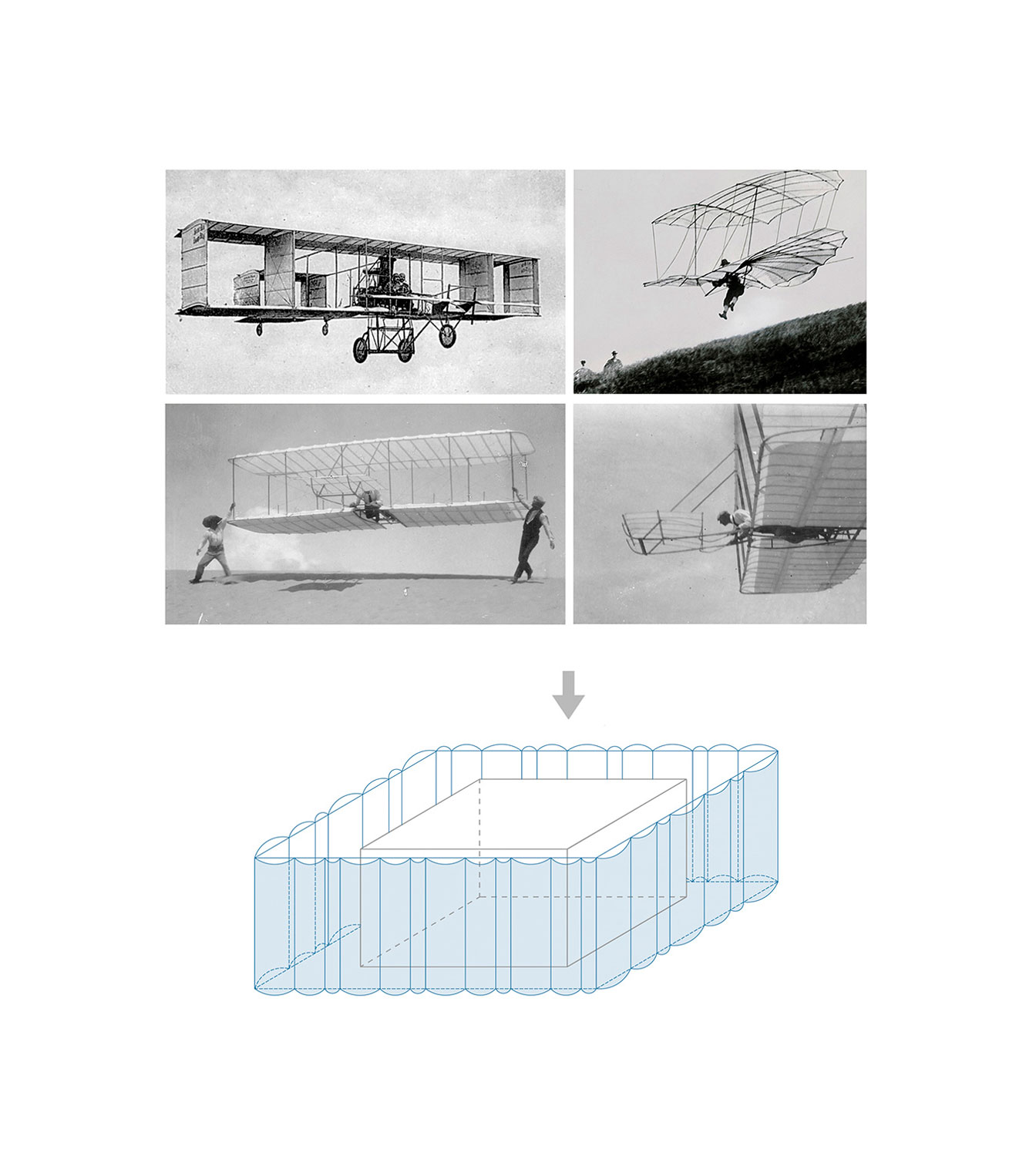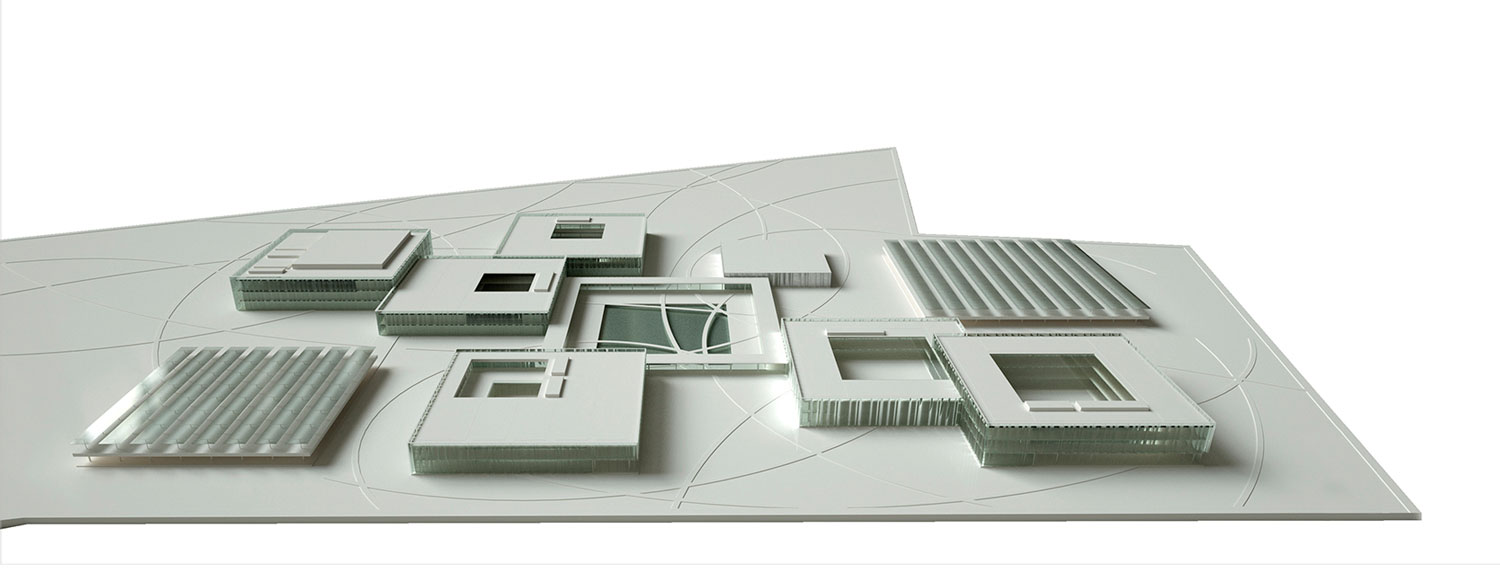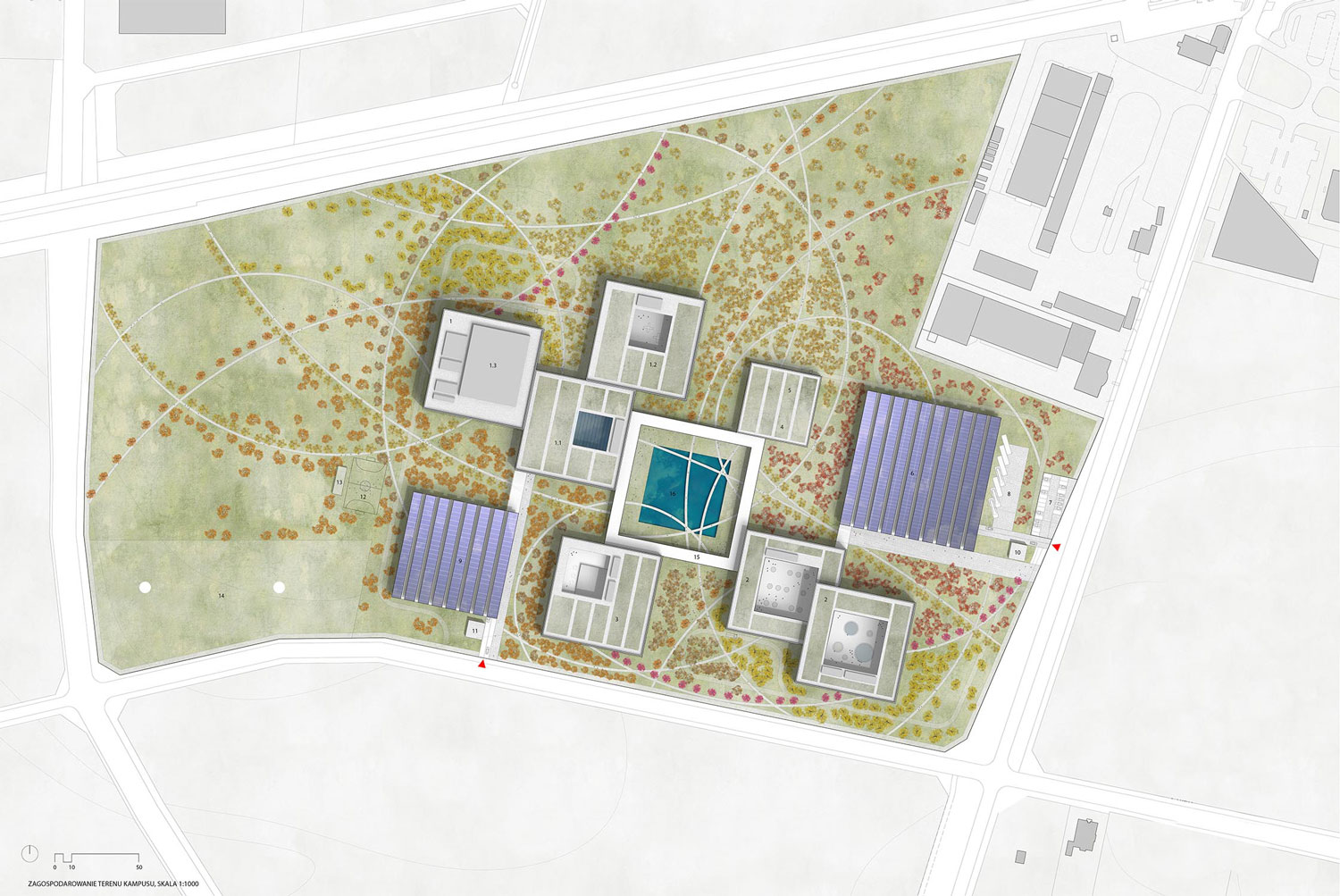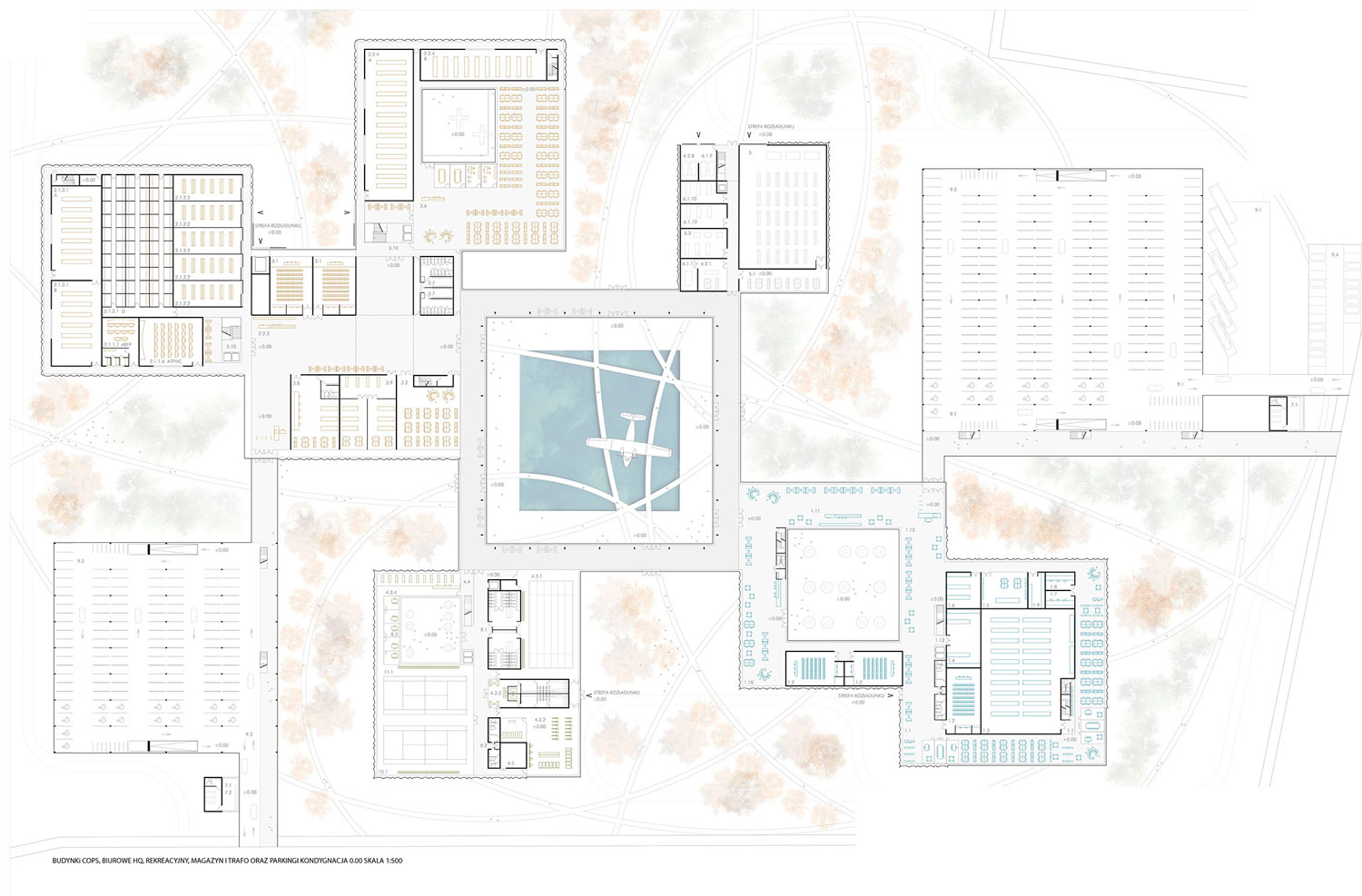1934-PAK-WAW.PL-2017
Client: Polish Flight Control Agency
Status: Competition (2017)
Clasification: Honour mention
Location: Warsaw, Poland
Coordinates: 52.184653, 20.934059
Climate: Continental, Temperate
Material: Glass
Environment: Industrial
Visualizer: Play-Time architectonic images
Scale: 32.278 ㎡ Large
Types: Headquarters, Institutional, Office, Office building
The headquarters of the Air Traffic Control of Poland is responsible for controlling the country’s air traffic, setting the control guidelines for Polish airports. The project, therefore, required an in-depth functional analysis due to the particular work conditions demanded by the organisation. Air traffic controllers must develop their work in a specific space, in conditions of absolute concentration and with high levels of control access.
Programmatically, we had to take on the challenge of designing a campus that would combine office spaces, leisure and entertainment, parking and warehouses, each with different levels of security and access control. A clear and categorical answer in terms of distributions and program location turns specially crucial.
The situation on the outskirts of Warsaw, in a formless plot and without an urban consolidation around, drove us to develop a project situated on the territory in a «chaotic» way. Without clear traces or urban alignments, the project had to be installed in the first phase and to expand in a second one. And this system of grouping, without references responded according to that environment.
The campus distributes office buildings, warehouses and rest areas (cafeteria, sports etc…) around a central element as a cloister. A common gallery space surrounding a green area for recreation and resting.
Although the rooms of controllers and computer equipment had to be under very strict conditions of isolation and without natural light, the campus material should express the idea of being in an open and transparent environment. That is why the circulations of these programs are placed along the perimeter, leaving these «black boxes» in the interior. The envelopes are therefore designed by curved glass and padding in historical reference to the configurations of the first curved aircraft wings.
